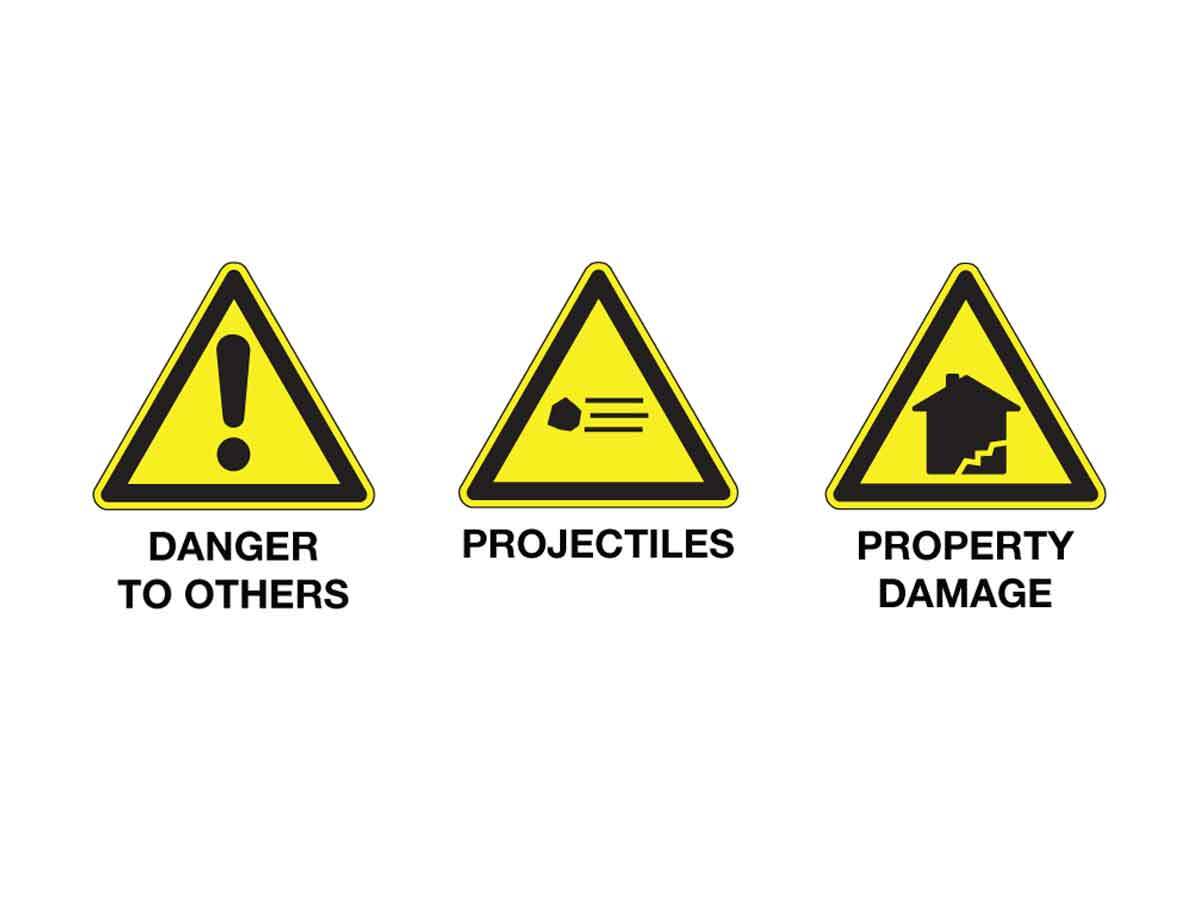A slingshot master can hit a soda can from 20 paces. Can you?

Make the slingshot.

Make elastic bands.
To begin, tie 2 rubber bands together to make a long band. Repeat. If you find you want more power later, you can double up the rubber bands.
Make a pocket.
Cut a small rectangle out of a scrap of leather or sturdy cloth. You can either tie the rubber bands to the pocket, or cut 2 small holes and loop the bands through.
Assemble.
Tie the rubber bands to the ends of a forked stick. If the bands slip off, try lashing them in place with a bit of string.
Aim and fire!

Place a pebble in the pocket and trap it by pinching the pocket with thumb and forefinger. Hold the handle steady at arm’s length. Keep a light, but firm, grip on the pocket and pull back.
Slingshots aren’t inherently very dangerous, but releasing projectiles can be. Always know where you are pointing your slingshot and NEVER aim in the direction of a person or pet. You are responsible for every projectile you release.
Release the pocket!
Slingshot masters say that the key to aiming is to hold the pocket steady and move the forked stick around to line up your shot. Aluminum cans make good targets: set ’em up and knock ’em down.
Accuracy comes from repetition. Gather a pile of pebbles and spend a few minutes every day aiming at a variety of targets. A slingshot master can hit a soda can from 20 paces.
Conclusion
SUPPLEMENTARY DATA
- The slingshot is a fairly modern invention, as these things go. It requires long, thin strips of stretchy rubber — a material produced first in the late 1800s and not widely available until the early 1900s. The idea is really an update of the ancient sling (a leather pocket tied to 2 leather strips), the weapon purportedly used by David to bring down Goliath.
- Rubber got its name from Joseph Priestley (inventor of soda water), who noticed that blobs of it were good for rubbing pencil marks off paper.
- If there was no air resistance to contend with, a pebble fired from a slingshot would travel in what is referred to as a ballistic trajectory. From the moment the pebble leaves the pocket of the slingshot, gravity bends its path down towards Earth. Put the air back into the equation and the path gets even shorter. Without air resistance, your pebble would travel almost twice as far.
Excerpted from Fifty Dangerous Things (You Should Let Your Children Do) by Gever Tulley with Julie Spiegler (http://fiftydangerousthings.com).
This project first appeared in MAKE: Volume 28, page 156.





